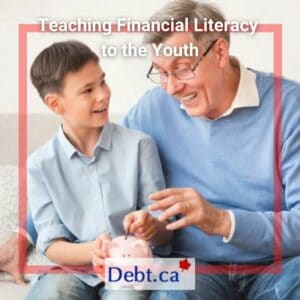Graduating from school and starting a career is a dream goal for many Canadians. Yet, the average tuition fee cost in 2024/2025 for a Canadian undergraduate program is $7,360, according to Statistics Canada. To pay for school, parents often encourage their teenagers to earn money or take out a student loan. To ease the financial burden, the federal government offers the Registered Education Savings Plan (RESP) to help save money for a child’s post-secondary education. This registered plan allows your RESP savings to grow tax-free and receive grants. It’s also a great tool for teaching children financial literacy skills can set them up for success.
What is an RESP?
The RESP is a tax-sheltered account to pay for the cost of a child’s post-secondary education. The child (the beneficiary) can use the money within the RESP to pay for expenses to attend a college, university, trade school, apprenticeship program, or CEGEP. It can be for a part-time or full-time program.
How does the RESP work?
A parent, grandparent, guardian, relative, or friend (the subscriber) can open an RESP account at a financial institution for a child after they’re born. There’s no annual contribution limit, but the lifetime RESP contribution limit is $50,000 per beneficiary. You can make contributions up to 31 years after you opened the account.
The RESP contributions aren’t tax-deductible. However, the investment growth and the grants grow tax-free until the money is withdrawn.
Government opening RESPs for children
In 2028, the federal government will automatically open an RESP account for children born starting in 2024 and later, who don’t already have an account by age 4. This encourages families to begin investing in their child’s education at an early age and enjoy the tax-free growth from their investments.
Government grants
The federal government provides the following programs to help boost your RESP savings.
Canada Education Savings Grant (CESG)
With the CESG, the government matches 20% of your annual RESP contributions. The maximum is $500 yearly. So you’ll need to contribute $2,500 each year ($2,500 x 20% = $500) to receive the maximum amount.
The maximum lifetime grant amount is $7,200 per beneficiary. That means the payments will be spread out over 14 years ($7,200 / $500 yearly = 14.4 years). Plus, low to middle-income families may receive an extra $100 per year.
Don’t worry if you started late. Any unused CESG amounts can be caught up in future years. Plus, the CESG is available until the end of the year when the child turns 17.
Canada Learning Bond (CLB)
The government gives financial aid up to $2,000 to low-income families. You can view the income eligibility requirements on the Government of Canada’s website. In the first year, the beneficiary receives $500, then $100 every year until the child reaches age 15. The payments are deposited into the RESP. You don’t need to make any RESP contributions to receive the CLB.
Types of RESP accounts
Individual plan: The non-family plan is for a single beneficiary and is ideal if you have one child. You don’t need to be related by blood or adoption. You can decide how much you want to contribute. Adults can also open up their own RESP, but they won’t receive the CESG.
Family plan: If you have multiple kids, you can name more than one child as a beneficiary. They must be related to you by blood or adoption. The family RESP helps you maximize the contribution room.
Group plan: This plan is for one child, and they don’t need to be related to you. Plan members pool together their contributions. There are strict rules, and you’ll need to make regular contributions on a set schedule. Be sure to understand the rules and cancellation policy.
Investment options for RESP savings
When you open an RESP account, you can choose from different types of investments. This includes Guaranteed Investment Certificates (GICs), index funds, exchange-traded funds, mutual funds, stocks, and savings accounts.
These investments come with different risk levels. Families may decide to have a mix of investments to balance their risk.
Benefits and Drawbacks of an RESP
Before you open an RESP, you should understand the benefits and pitfalls.
Pros
The following are the benefits of having an RESP:
- Free government grants: the CESG and CLB help to grow your education savings
- Tax-free growth: your investments can grow tax-free. Only when the student withdraws the money will they be taxed.
- Investment choices: You can choose savings and investments that can grow inside this account.
Cons
These are the disadvantages to consider:
- Contributions aren’t tax-deductible: Unlike the Registered Retirement Savings Plan (RRSP), the RESP contributions won’t lower your taxable income.
- Investing risk: If you invest in stocks and bonds, your investment account may decrease in value.
- Penalties: If you use the money for non-educational purposes, you may pay taxes. Furthermore, you may need to return the grants to the government.
RESP withdrawal rules
When your child starts their post-secondary program, you can begin making RESP withdrawals. There are two ways:
Education Assistance Payments (EAPs): include grants and accumulated interest. It’s taxed as income to the student, who usually has low or no income and pays little tax.
The EAP withdrawal limit is $4,000 for part-time enrollment and $8,000 for full-time enrollment for the first 13 weeks. Afterwards, you can withdraw any amount.
Post-secondary Education Payments (PSEs): include RESP contributions. The money is returned to the subscriber, who can give it to the beneficiary to use.
If you don’t use the funds in the RESP
There are several options:
- Keep the account open and reserve it for future educational studies.
- If you have another child, you may swap the name of the beneficiary.
- Transfer the money into a different registered savings plan, such as the TFSA or RRSP.
- Close your RESP account. You need to return leftover grants to the government, and you will receive your contributions back. Usually, any accumulated interest that you receive is taxable.
Prioritizing financial education for your children
Despite rising tuition costs, it’s worthwhile for many. University graduates often earn more than those with a high school diploma, according to the Ontario Confederation of University Faculty Associations (OCUFA). That’s why earning a degree or diploma from a post-secondary institution is a top priority for families.
With an RESP, you can save money for your child’s post-secondary education. This allows them to focus on their studies and not stress about managing their student loans.
Struggling to keep up with student loan payments because of credit card debt? Our Credit Counsellors can help with a Debt Management Plan. Call for a free consultation.










